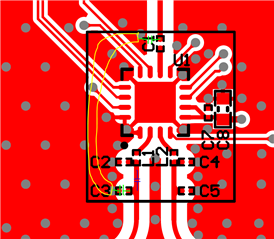Hi,
Background:
I am looking at interfacing nRF21540 (FEM) with nRF52833 (Host) - hoping there's Zephyr support available for this(?)
Question:
Product spec for nRF21540 reads “Control interface via I/O, SPI, or a combination of both” – I think that means, I can
use SPI bus exclusively for accessing All of the 21540 functions – i.e. no I/O needed, except for PDN (and SPI CSN)?
If so, how are unused nRF21540 pins 4, 7, 8, 9 supposed to be terminated – left unconnected, tied to VDD, or GND?
In may case "SPI-only" interface (no I/Os needed) is convenient for sure. But in your experience/ opinion, is there any
potential downside, such as performance and/or (OS/ driver/ example code) support penalty in taking this route?
Please advise. Thanks.




